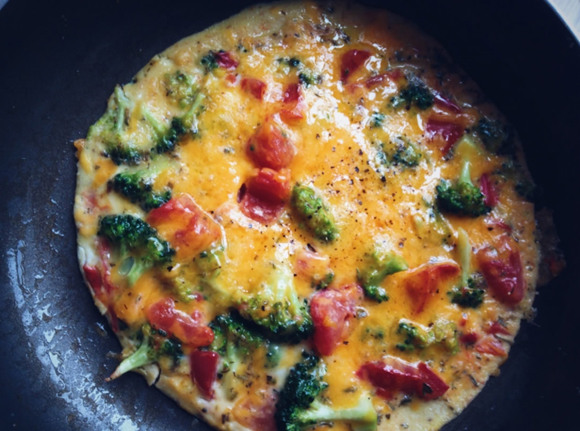
Pic2Recipe thought this veggie omelet made by one of our editors was a frittata. PhotoPic2Recipe thought this veggie omelet made by one of our editors was a frittata. (Photo/CGTN)
The next time you come across a picture of a ravishing dish on Instagram or WeChat that whets your appetite but you can't exactly make out what it is made of, don't wrack your brain trying to guess the recipe.
An AI system unwrapped earlier this week helps those with culinary curiosity find the right ingredients of an unknown dish and offers step-by-step instructions how to make it just by analyzing a photo they upload online.
Researchers from the Polytechnic University of Catalonia, Massachusetts Institute of Technology (MIT) and Qatar Computing Research Institute have developed a deep-learning algorithm that can whip out a recipe just by "looking" at a photo of the dish.
They fed the neural network one million recipes, along with one million photos of their final outcome, from popular websites like Allrecipes.com and Food.com to create a huge database they dubbed, Recipe1M, accessible through a web portal they called Pic2Recipe.
What's cooking?
With a single click of a button, the website allows users to upload a photo of the mystery dish and then the system, using machine learning, goes through the massive mounds of data to analyze it.
It then predicts a list of possible ingredients along with their relevant recipes, then ranks them based on how certain the AI is they match the image.
The image recognition system achieves this through undergoing training to explore how a photo of a dish matches with what goes into its preparation.
Such association has allowed the AI to successfully retrieve correct recipes of food images 65 percent of the time during test trials.
Despite its announcement cooking up a storm among AI experts and foodies, the algorithm has still a long way to go before perfecting its mechanism.
CGTN Digital put the system to the test, but found that some results leave the taste buds wanting more.
A photograph of homemade apple muffins on a baking pan was correctly identified as featuring muffins, though the system failed to detect the flavor, suggesting – most likely based on the color of the final result – they were chocolate flavored.
The AI similarly mixed up a veggie omelet with frittata, and when presented with images of seven-vegetable couscous and chicken burrito smothered in cheddar cheese it found "no matches".
The researchers behind Pic2Recipe are not sugarcoating the reality and said they are aware of its limited capabilities to parse certain food items that are either too complex or too versatile in the way they are prepared – at least for the time being.
"It still has a lot of difficulty identifying certain food types (…) It makes a big difference if photos are taken from close up or far away, or if the photo is of a single item, multiples, or part of a complete dish," Nick Hynes, an MIT electrical engineering and computer science student and one of the members of the research team, told Wired UK.
Though good news for baking buffs as recipes of cookies and muffins are easily discernible due to their popularity online.


















































